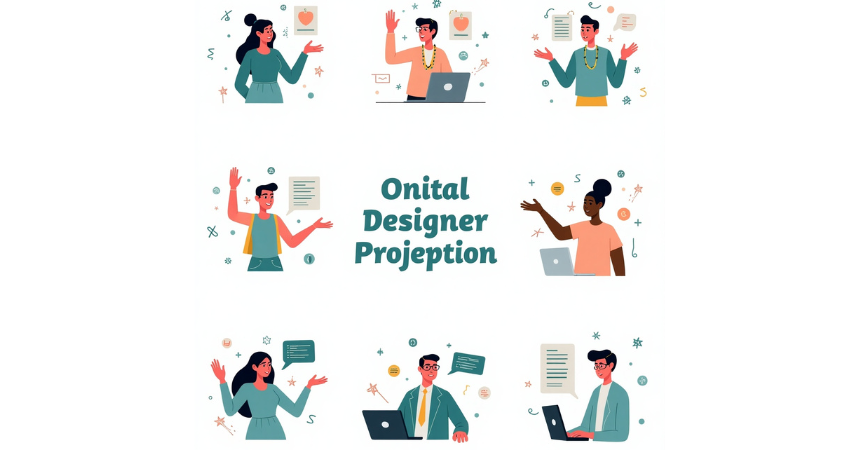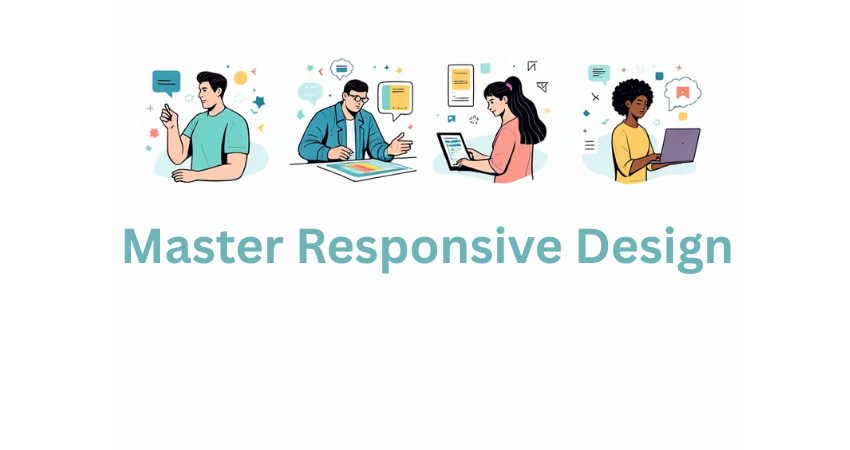
Working with either local clients in Cardiff or established names across borders, web designers are expected to exhibit creativity, strategy, and technical prowess in equal measure. Commercial web design goes beyond just looking pretty; today, it is about delivering digital experiences that are responsive, accessible, and in-line with an organization’s strategic goals.
From developing portfolio sites to setting up a Cardiff business for increased online exposure, a designer’s capability to arrive at a purposeful, user-centered design can prove to be invaluable. In this article, we are going to list the 10 most essential things all great web designers should be able to do and how possessing these skills will help you in distinguishing yourself from your peers in the industry.
In today’s ever-evolving array of digital design capabilities ranging from understanding the design fundamentals to designing rapidly loading and accessible websites, these aspects are crucial. It isn’t just about cosmetic application; functionality, user satisfaction, and conversion are also attributes of a well-designed product. Especially in cities like Cardiff, where local identity and community values form a pivotal background to business branding, your sensitivity for tailoring experiences and staying current might count as an asset. This guide gives insights into some of the critical distinctions between an average designer and a great designer, whether that designer is a beginner just starting out in the profession or a seasoned designer seeking to improve.
Understand the Principles of Design
Balance, Contrast, and Hierarchy
A designer’s canvas is a medium for communication, and decoration is just one of the tools that a successful designer employs. The ability to successfully implement basic design principles, like balance, contrast, and hierarchy, can create an instant difference between a layout that confuses users and one that intuitively channels them into action. Balance ensures that no part of the page can be said to be heavier than or more dominant than another for effect. Either symmetrical or asymmetrical balance can be employed; knowing when to apply which is part of the arsenal of an effective designer.
Contrast, in direct opposition, makes everything divert attention toward the most important things. Contrasting elements could be an issue of color, size, shape, or weight of the text. For example, a contrasting color is often used for the Call to Action buttons, making them pop out on the page. Hierarchy determines the order of reading your content. It works by guiding the eye, using approaches such as size and placement and white space to transport visitors along sections.
In Cardiff, where various small businesses often strive to project authenticity and professionalism, applying these principles ensures that your designs can resonate with their values. It is non-negotiable to commence your web design work with the fundamentals, so that your designs may engage its audience functionally and aesthetically. These principles will be your toolbox for anything from landing pages to fully-fledged e-commerce platforms. The framework beneath the artistry, mastering it cultivates trust for your brand and retains visitors longer.
Master Responsive Design
Designing for All Devices

Currently, we live in a mobile-first world where users expect uniform and seamless experiences across all devices. Responsive design is now a necessity, while in the past it could be treated as an option. As an exemplary web designer, the capability to produce layouts that adapt themselves to different screen sizes is an act of user commitment. Things like fluid grids, flexible images, and CSS media queries adjust themselves automatically to suit different resolutions. Consistency and clarity are therefore of paramount importance for the local Cardiff user browsing on a smartphone during the commute or using a tablet at home.
The site might lose all credibility by looking sharp on desktop but breaking on mobile. A good responsive design retains the brand’s identity in a way that maximizes readability and eases navigation across every available device. It isn’t only about resizing; it is about rethinking layouts for user intent. Since mobile users are inherently directed toward a goal, making menus simpler, buttons larger, and content a priority is a must. Additionally, testing your responsive design with tools like Chrome DevTools or Browser Stack is essential to ensure consistency across devices.
Small- to medium-sized businesses in Cardiff rely tremendously on mobile traffic to convert local leads. Your design directly impacts the bounce and conversion rates. Google uses mobile-first indexing, which benefits your responsive design further in search results. This is a great help in a fiercely competitive digital market. Responsive web design anticipates the needs of users and brings content effectively to them, irrespective of the device
Know Basic HTML and CSS
Code That Complements Design
Even though you might have become a little comfortable with Figma, give HTML and CSS a chance because these two languages need no introduction. They are the ones who would take your designs to the web. Also, now that you know how your layout is being translated into code, you can control things better, talk to developers better, and fix simple issues alone. Knowing to write clean semantic HTML ensures that your content is structured rightly for search engines and accessibility tools. CSS, meanwhile, works on the styling and visual polish: whether it’s about defining grid layouts, customizing typography, fixing those margins, or anything else, just having a pinch of CSS empowers you to make meaningful connections between design and functionality.
This is particularly useful when dealing with clients in Cardiff, where even the small businesses typically cannot afford developer teams able to build their application and tend to favor designers who work on both sides-the aesthetics and implementations. These appreciations lead to knowing the limitations and the very important capabilities that front-end code gives so that you design within realistic constraints.
It encourages delivery in less time by reducing chase backs. Knowing CSS transitions and media queries will make it even easier for you to experiment with new interactions and responsive behavior. Code Pen and GitHub are fantastic for learning and experimenting. Simply being able to open a web inspector, tweak styles, and get one’s head around the structure behind the page gives great confidence and credibility. It shows the client that you are not just a pixel pusher but a solution provider again who can convert ideas into working digital experiences. Thus, learning even a little code makes you a better, more versatile designer.
Prioritize User Experience (UX)
Designing With Empathy
An exemplary web designer does not just design for aesthetics-they design for people. Understanding an audience and knowing the person, the goals, the obstacles, and how they engage with digital products takes time. Perfect UX design is about empathy. It starts with research about those users: user interviews, survey work, usability tests, and so on to draw out what matters to your users. On the other hand, as a designer based in Cardiff, you may be working on some relevant tourism site for the local economy. Quite evidently, it would be that interface design processes with which potential visitors to this site will feel that it is easy to find information, book services, or contact that particular business without any frustration. Much more than a pretty face, it takes a little more of such things as intuitive navigation, well-defined CTAs, and smooth functionality.
Great designer’s wireframe and craft the user flows before prototyping and validating their ideas. The closer your design tends to behave or mimic that of a real person, the more successful your website will be. Important accessibility dimensions are embedded in great UX design: making sure that your site is really working with people with disabilities. It is inclusive to use proper contrast ratios or keyboard navigation as well as a screen-reader-friendly code. Not only is it ethically right, but it provides a broader reach to your site while also improving the SEO factor. In Cardiff’s very intimate and diverse business environment, inclusivity can be a brand differentiator.
Consider as a compass: UX is your guide. You may design empathetically and have a clear understanding of your user, but you can never be too sure that times will not change. An effortless experience in the usage of your site would be a plus for both the designer and the brand. Development of relationships and not websites are built when regarding UX here. An site user begins to have experiences that will make him or her return, refer, or convert.
Create Accessible Web Designs
Designing for Everyone
Accessibility should not be an option; rather, it must be a requirement. Websites must be created to support the diverse groups of individuals who may have very different skills in terms of physical or cognitive ability or ability to use a given website. To guarantee an accessible environment-a less obstructive environment-is helpful and ensures a far more inclusive experience: be it users with visual impairment, motor weaknesses, or someone that employs assistive technologies with, say, a screen reader.
This is particularly important in areas such as Cardiff: a population that embraces diversity and shares the ideals of inclusion. As a major web designer, one will have to keep the WCAG close to heart to ensure everything accessible-from text readability, keyboard-navigable interfaces, and images with appropriate alt-text to assuring interactive features are well addressed.
Testing your work with WAVE, Axe, or Lighthouse is equally important to capture and mitigate any early potential accessibility challenges. Accessibility should be an integrated consideration throughout the entire design process, not just an afterthought. Practicing good color contrast, flexible font sizes, and no moving or autoplaying content can really benefit everyone and sometimes particularly people with disabilities. Cardiff companies that want to reach a broader audience recognize the professionalism and social responsibility of accessible design. A matter of law in many sectors, it also helps SEO.
Whether it is inclusive form labels, ARIA roles, or semantic HTML, every choice you make in your layout and code will bring your site a step closer to being accessible. When users feel seen and supported, they are much more likely to engage, trust, and return. Accessibility is not just good practice-it’s good business-and great designers make it a standard, not an exception.
Conclusion
It’s not sufficient to develop creativity; being one of the best web designers would also entail cocooning oneself with proper realistic soft skills that are produced in actually creating meaningful digital experiences. In the small boutique shop in Cardiff’s city center, or collaborating with a much larger agency, nothing really tells a great designer like their ability to solve problems through well-thought-out designs. The very ten skills discussed here from basic design through responsive layouts to accessibility and UX are the fundamentals of sound website design in 2025 and beyond.
But above that, it is important to note that your mindset is what really differentiates good from great. The brightest minds in design never stop learning. They listen, adapt, test, and fine-tune. They build websites for their end users and not for their mock-ups. Web designers who offer services that focus on localizing their users will never run short of opportunities in cities like Cardiff, where businesses thrive on a personality factor against community values.
So no matter whether you are a beginner or perfecting your craft, never lose sight of how your design fits into user experience. For that is what will make a site convert; engage users; and set it apart from the rest. Curiosity; empathy; and always thinking in terms of your users.